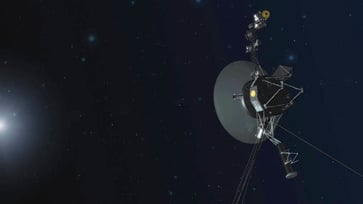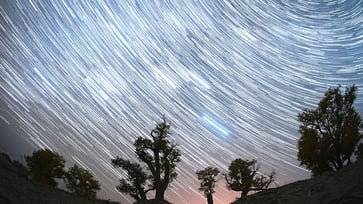The most anticipated comet of the year is visible from Earth for the first time in 80,000 years.
An app for stargazers, Starwalk, declared that this comet is the 'most anticipated comet of the year'.

An unseen comet for over 80,000 years will be observable from Earth in two separate time periods within the next month.
According to earth.com, Comet Tsuchinshan-ATLAS, also known as Comet A3, is believed to have an orbit around the sun of more than 80,000 years.
From Sept. 27 to shortly before sunrise on Oct. 2, the comet will be visible, resembling a fuzzy ball with a tail extending across the sky.
According to Minjae Kim, a space expert at the University of Warwick's astronomy department, C/2023 A3 has an orbital period of approximately 80,000 years, making it a long-period comet. As a result, its behavior and appearance can be unpredictable, with potential changes in brightness and tail development as it approaches the sun.

"If predictions are accurate, the comet will be visible to the naked eye, appearing as a hazy star with a tail extending across the sky. However, if it's not visible, binoculars or a small telescope may provide more detail about the comet's structure and tail," Kim stated.
According to WKMG, September 27th marked the perihelion, or closest point to the sun, of the comet, after which it will begin its journey back to the outer solar system.

If the comet survives its journey around the sun, another viewing opportunity with improved visibility will occur in October.
If the comet survives its journey around the sun, it will be visible with the naked eye as it approaches Earth, with its peak visibility occurring from Oct. 12 to Oct. 20.

For the next 80,000 years, the comet will gradually ascend in the sky until it vanishes.
An astronomical app for stargazers, Starwalk, stated that this comet is the "most anticipated comet of the year."
science
You might also like
- Lunar modules from the first two moon landings have been captured in stunning detail by Orbiter photos, more than 50 years after the historic missions.
- Discovery of a remarkable mastodon jaw in a New York homeowner's backyard
- NASA resumes communication with Interstellar Voyager 1 after pause.
- In 2055, the asteroid that was once referred to as Earth's "mini moon" will make a return visit.
- A new species of sea slug that resides in the ocean's 'midnight zone' has been discovered with a glowing appearance.



















